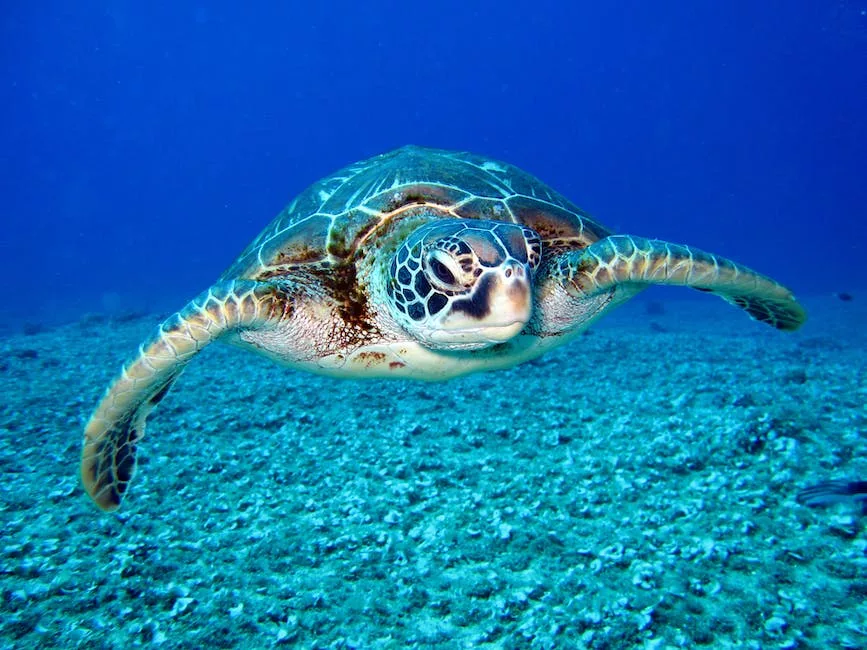Introduction
Here is the latest news on turtles.
The Impact of Climate Change on Turtle Populations

Turtles are fascinating creatures that have been around for millions of years. They are known for their slow and steady pace, but unfortunately, their populations are not keeping up with the times. Climate change is having a significant impact on turtle populations around the world, and it’s not looking good.
One of the biggest threats to turtles is rising sea levels. As the oceans warm, the ice caps melt, and the water expands, the sea level rises. This means that the beaches where turtles lay their eggs are disappearing. Turtles need sandy beaches to lay their eggs, and if they can’t find a suitable spot, their populations will decline.
Another problem is the changing temperature of the sand. Turtles lay their eggs in the sand, and the temperature of the sand determines the sex of the hatchlings. If the sand is too hot, the hatchlings will be female, and if it’s too cold, they will be male. With the rising temperatures caused by climate change, there is a risk that there will be too many females and not enough males, which could lead to a decline in turtle populations.
Climate change is also affecting the food sources of turtles. Many turtles feed on jellyfish, but as the oceans warm, jellyfish populations are declining. This means that turtles are struggling to find enough food to survive. In addition, the acidity of the oceans is increasing, which is making it harder for turtles to digest their food.
It’s not just the oceans that are affected by climate change. Turtles that live on land are also at risk. As temperatures rise, the habitats of many turtle species are changing. This means that they are struggling to find suitable places to live and are being forced to move to new areas. This can be a problem because turtles are slow-moving creatures, and it can take them a long time to adapt to new environments.
So, what can be done to help turtles? One solution is to reduce our carbon footprint. By using less energy and reducing our greenhouse gas emissions, we can slow down the rate of climate change. This will give turtles more time to adapt to the changing environment and may help to prevent their populations from declining.
Another solution is to protect turtle habitats. By creating protected areas where turtles can lay their eggs and feed, we can help to ensure that their populations remain healthy. This can be done by working with local communities to create sustainable fishing practices and by reducing pollution in the oceans.
In conclusion, climate change is having a significant impact on turtle populations around the world. Rising sea levels, changing temperatures, and declining food sources are all contributing to the decline of these fascinating creatures. However, there are solutions that can help to protect turtles and ensure that their populations remain healthy. By reducing our carbon footprint and protecting turtle habitats, we can help to ensure that these slow and steady creatures continue to thrive for millions of years to come.
New Discoveries in Turtle Behavior and Communication
Turtles are fascinating creatures that have been around for millions of years. They are known for their slow and steady pace, their hard shells, and their ability to retract their heads and limbs into their shells for protection. But did you know that turtles also have complex social behaviors and communication methods? In this article, we will explore some of the latest discoveries in turtle behavior and communication.
Firstly, researchers have found that turtles have a surprisingly diverse range of vocalizations. While they may not be as loud or complex as the songs of birds or the calls of primates, turtles use a variety of sounds to communicate with each other. For example, some species of turtles make grunting noises when they are courting or mating, while others emit hissing or clicking sounds when they are threatened or disturbed. These vocalizations are often too quiet for humans to hear, but they play an important role in turtle social interactions.
Another interesting discovery is that turtles have a sense of smell that is much more developed than previously thought. While it was already known that turtles use their sense of smell to locate food and find mates, recent studies have shown that they can also use scent to recognize individual members of their own species. This means that turtles may have a more complex social structure than previously believed, with individuals forming long-term relationships and recognizing each other based on scent.
In addition to vocalizations and scent, turtles also use body language to communicate with each other. For example, some species of turtles will bob their heads or wave their limbs to signal aggression or submission. Others will stretch out their necks or open their mouths wide to intimidate predators or rivals. These displays of body language are often subtle and nuanced, but they play an important role in turtle social dynamics.
One of the most fascinating aspects of turtle behavior is their ability to navigate over long distances. Many species of turtles are known to migrate hundreds or even thousands of miles between their breeding and feeding grounds. While scientists are still studying the exact mechanisms that turtles use to navigate, it is believed that they use a combination of visual cues, magnetic fields, and their sense of smell to find their way. This remarkable ability to navigate over vast distances is just one of the many reasons why turtles are such amazing creatures.
In conclusion, the latest discoveries in turtle behavior and communication have shed new light on these fascinating creatures. From their diverse vocalizations to their complex social interactions, turtles are much more than just slow-moving reptiles with hard shells. By studying their behavior and communication methods, we can gain a greater appreciation for the unique and intricate world of turtles. So the next time you see a turtle basking in the sun or swimming in a pond, take a moment to appreciate the incredible complexity of their lives. And who knows, maybe you’ll even hear them grunting or hissing in their own special way!
Conservation Efforts for Endangered Turtle Species
Turtles are fascinating creatures that have been around for millions of years. Unfortunately, many species of turtles are now endangered due to habitat loss, pollution, and over-harvesting. However, there is some good news on the conservation front for these shelled creatures.
One of the most significant conservation efforts for turtles is the Turtle Survival Alliance (TSA). This organization works to protect endangered turtle species by breeding them in captivity and releasing them back into the wild. The TSA has had great success with several species, including the Burmese roofed turtle, which was once thought to be extinct in the wild.
Another organization making strides in turtle conservation is the Turtle Conservancy. This group focuses on protecting turtle habitats and educating the public about the importance of turtles in the ecosystem. They also work to combat the illegal trade of turtles, which is a significant threat to many species.
In addition to these organizations, there are also many individuals and groups working to protect turtles in their local communities. For example, some beach communities have implemented turtle-friendly lighting ordinances to reduce the number of hatchlings that become disoriented and die on their way to the ocean.
But it’s not just conservation efforts that are helping turtles. Advances in technology are also playing a role. For example, researchers are using GPS tracking devices to study the movements of sea turtles. This information can help identify critical habitats and migration patterns, which can then be used to develop conservation strategies.
Despite these positive developments, there is still much work to be done to protect turtles. One of the biggest challenges is the illegal trade of turtles and their eggs. Many species are highly sought after for their meat, shells, and use in traditional medicine. This trade is not only illegal but also unsustainable and threatens the survival of many turtle species.
Another challenge is habitat loss. Turtles need specific habitats to survive, and as these habitats are destroyed or altered, turtle populations decline. Climate change is also a significant threat to turtles, as rising temperatures can affect the sex of hatchlings and alter nesting patterns.
So, what can we do to help turtles? One of the most important things is to educate ourselves and others about the importance of turtles in the ecosystem. We can also support conservation organizations and efforts to protect turtle habitats. Additionally, we can make small changes in our daily lives, such as reducing our use of plastic, which can end up in the ocean and harm turtles and other marine life.
In conclusion, while there is still much work to be done to protect turtles, there are also many positive developments in conservation efforts and technology. By working together and taking small steps in our daily lives, we can help ensure that these fascinating creatures continue to thrive for generations to come. And who knows, maybe one day we’ll even be able to crack a turtle joke without feeling guilty about their endangered status.
Conclusion
Conclusion: The latest news on turtles highlights the ongoing threats to their survival, including habitat loss, pollution, and climate change. Efforts to protect and conserve turtle populations are ongoing, but more action is needed to ensure their long-term survival. It is important for individuals and governments to take steps to reduce human impact on turtle habitats and support conservation efforts.



